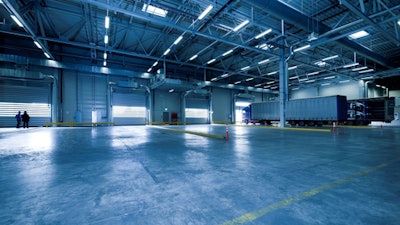
As of August, the national industrial vacancy rate in the United States was approximately 6.4%, reflecting an upward trend from the previous months, according to recent data from ITS Logistics, powered by Cresa. That same month, the Logistics Manager’s Index (LMI) stood at 56.4, reflecting moderate expansion in the logistics industry, albeit a slight decrease (-0.1) from July’s reading of 56.5.
“This trend of increasing vacancy rates suggests a temporary supply-demand imbalance as new developments outpace demand growth in certain regions,” says Ryan Martin, president of assets for ITS Logistics. “The increasing vacancy rate is likely related to the drop in producer price index (PPI), suggesting that prices are softening for warehousing and storage services. As new supply continues to enter the market, especially in major industrial hubs, pricing pressure could persist unless demand accelerates, or development slows down.”
Key takeaways:
- A recent article from The Wall Street Journal referenced data retrieved from Cushman & Wakefield, confirming warehouse construction dropped to 309 million square feet in Q3, a 43% decrease from last year and the largest decline since 2008. In addition, the previously mentioned industrial real estate vacancy increase of 6.4% is up from 4.6% a year ago, which marks the highest level since late 2014. While the average asking rental rate for industrial space exceeded the $10 per square foot (psf) level for the first time in history at the close of Q3 at $10.08 psf, it showcases an increase of 4.3% year-over-year as some markets are continuing to experience increases in rent despite softer fundamentals than the past three years.
- While the industry prepares for the close of the year, both UPS and FedEx have released their 2024-2025 peak season surcharges, which will significantly impact high-volume shippers.
“As it pertains to the LMI score, by comparison, in March 2024, the LMI was higher at 58.3,” adds Martin. “This indicated a faster rate of expansion earlier in the year. Between March and August, the slowdown in the LMI suggests that while logistics activities continued to grow, they did so at a decelerating pace. A notable factor during this period was the slight contraction in warehousing utilization and capacity, reflecting adjustments in supply chain management as the industry dealt with inventory fluctuations and cost pressures.”









![Pros To Know 2026 [color]](https://img.sdcexec.com/mindful/acbm/workspaces/default/uploads/2025/08/prostoknow-2026-color.mduFvhpgMk.png?ar=16%3A9&auto=format%2Ccompress&bg=fff&fill-color=fff&fit=fill&h=135&q=70&w=240)











